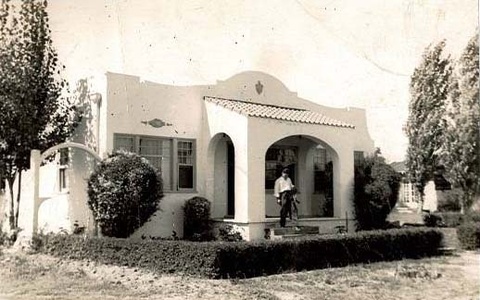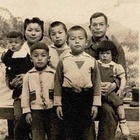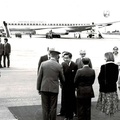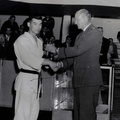The Seino family purchased a house in Hawthorne just before the war and ran a fairly large farm. However, in 1941, the Pacific War broke out. The following year, the family received a forced eviction order and had to leave their home and farm behind. After being sent to an assembly center built at Santa Anita Racetrack, Matsukichi and Fumiko, along with Shunichi, Toshiyuki, Tatsuo and their three young sons, were sent to the Lower Internment Camp in Arkansas. There, their daughter Hiroko was born. They were then transferred to the Tule Lake Internment Camp in Northern California in October 1943, and in 1944, their fourth son, Katsuyuki, was born at Tule Lake.
"I think we stayed in Lower for about a year, and then we were moved to Two Riks. I was only four years old so I don't remember it very well, but apparently there were quite a few anti-American people among the Japanese, and they were involved in all sorts of movements. My father was apparently among those people who were working hard and saying that Japan would not lose. After Two Riks, my father was sent to a different place, and only my mother and I lived there, five of us children. I think it must have been difficult for my mother."In 1943, the War Relocation Administration (WRA), which ran the camp, conducted a "loyalty registration" for all internees over the age of 17. This questionnaire, titled "Request for Release Permission," asked whether they were loyal to the United States or Japan, and those deemed disloyal to the United States were to be transferred to the Tule Lake internment camp, which was an isolated internment camp. Today, the name is often written as Tule Lake in katakana, but the internees were called Tsuri-re-ki in katakana and written as "Tsurure-ki" in kanji.
These "disloyal" people sent from internment camps across the United States were not all fanatical supporters of Japan, nor were they troublemakers disloyal to America, as the WRA deemed them. There were a variety of reasons and circumstances for their being sent, such as some who had become pro-Japanese out of anger and despair at being forcibly interned in their home country or the second home country where they had lived for decades, and others who had simply followed family members who answered "no" to the question about their loyalty to America.
However, in 1944, extremely pro-Japanese groups such as the "Immediate Return Volunteer Group" and the "Houkoku Youth Group" were formed in Tule Lake. Many of the members were Issei and returnees from the United States who wanted to return to Japan. Matsukichi was probably one of them.
The Seino family was reunited with Matsukichi on board the repatriation ship returning to Japan. "My father was somewhat Japanese in his thinking, and it seems he decided to return to Japan because he thought there would be no home in Hawthorne. I don't remember much about that time, and my parents didn't like to talk about it much because they had a hard time."
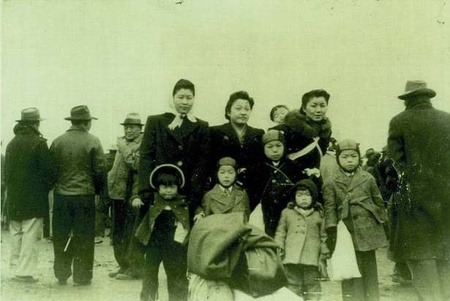
© 2022 Masako Miki


